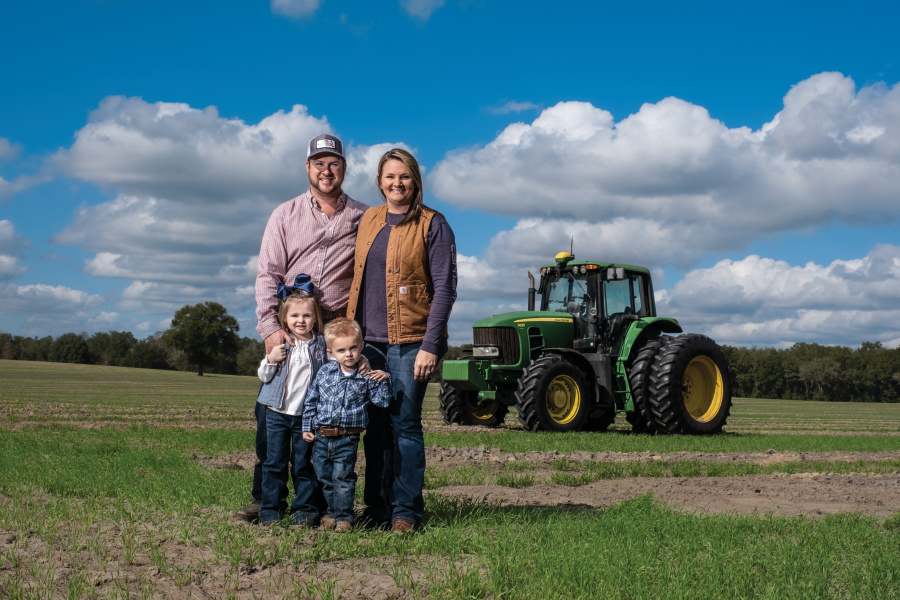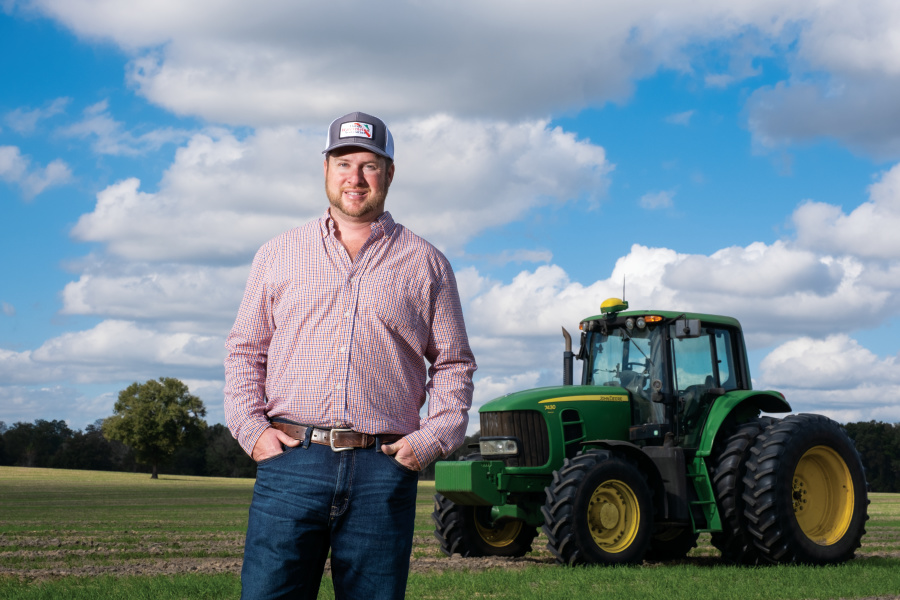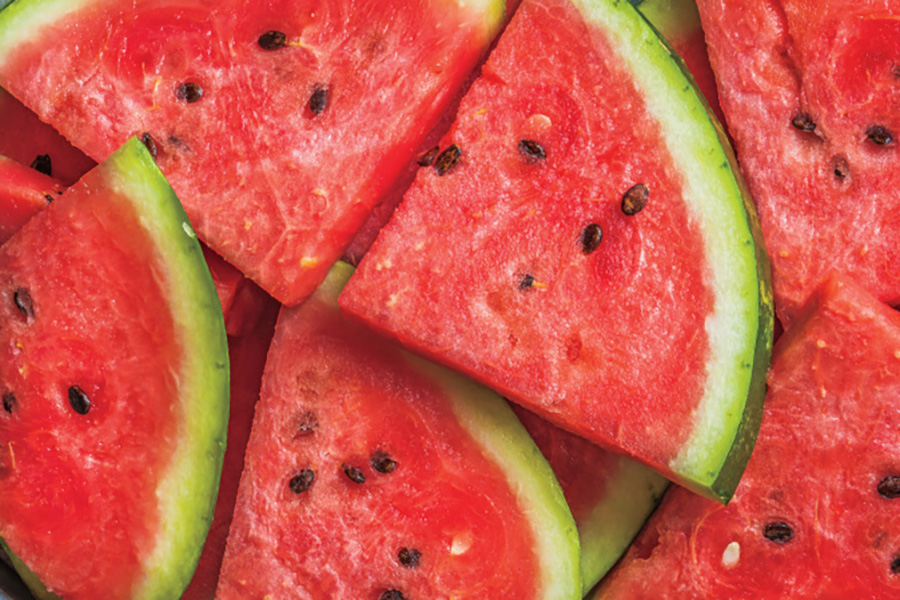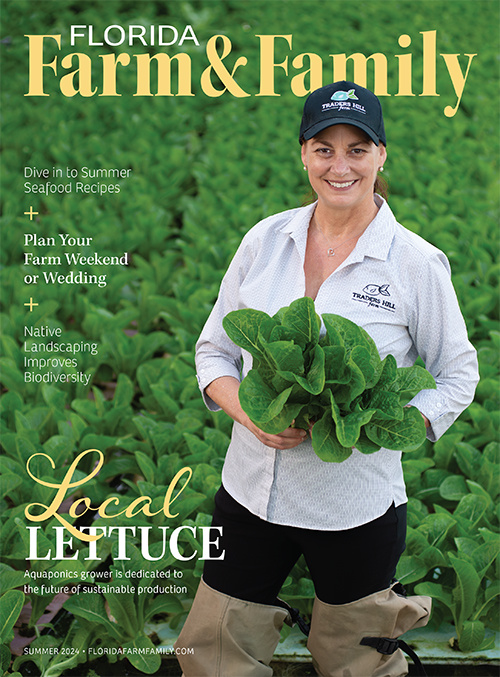
Nothing says summer like sinking your teeth into a sweet, vibrant slice of watermelon and feeling the cool juice run down your hands. Next time you enjoy this tasty, nutritious snack, thank a Florida farmer.
“Florida is currently the main supplier of U.S. grown watermelon in the country,” says Trey Miller, president of the Florida Watermelon Association (FWA). “Annually, production estimates have Florida at around 907 million pounds, which is roughly 25% of the domestic supply.”
The FWA supports the state’s watermelon industry through research, education and promotion, ensuring both growers and consumers have the most recent information about this important crop.
“Agriculture is an extremely important category in Florida’s economy, and watermelon takes up roughly 30% of that category,” Miller says.
See more: Hinton Farms Produce Inc. Finds Sweet Success in Winter Strawberries
Cook Farms

Adam and Ashley Cook are two of approximately 430 watermelon growers in Florida. They operate Cook Farms in Trenton and produce close to 6 million pounds of watermelon annually.
In addition to watermelon, the Cooks grow yellow squash, zucchini, jalapeno and other peppers, eggplant, okra, sweet corn, acre peas, grass seed and small grains, and raise cattle.
“We grow about 100 acres of watermelon,” Adam says. “In total, we have about 2,200 acres of pastureland and farmland because it’s important for us to be diverse. It helps us stay fluid and viable.”
Adam says Florida is the ideal place to grow watermelon because of its sunny, warm climate, which allows the state to be the first to the domestic market.
“Domestically, watermelon is coming out of Florida through May to the rest of the country, and then it opens up to a few other states,” he says.
Miller agrees, noting Florida is one of the few places to have two watermelon crops per year – one in the spring and one in the fall.
“Planting typically begins in Immokalee in December,” he says. “The temperatures are usually warmer, leading to great growing weather for young plants.”
Most of Florida’s melons end up in national grocery store chains across the country, such as Aldi and Kroger, through either brokers or wholesalers. Adam says the majority of Cook Farms’ melons go to the Northeast and Canada, with a substantial amount shipped to the Midwest as well.

He notes one of the challenges of being a domestic farmer is competing with imported melons.
“Imported melons are a cheaper product, but many consumers don’t understand the safety standards our country has in place to make food safer for their families,” Adam says. “A big part of my job is teaching consumers why our product might cost a little more but what the benefit of paying that extra dollar might be.”
Miller echoes the sentiment. “It’s important for consumers to know that farmers go to extreme lengths to ensure the product they ship is safe and healthy,” he says.
Miller adds a few other challenges watermelon growers face: labor shortages, increase in freight delivery costs, disease and pests, and cost of inputs due to supply chain issues.
“Things like fertilizer, fuel and packaging costs have increased greatly over the past year,” he says.
Despite the challenges, Adam says he couldn’t imagine doing anything other than farming, and many Florida farmers feel the same.
“I have a 4-year-old and a 2-year-old who are involved in the farm, too,” Adam says. “It’s truly a lifestyle that we enjoy, and there’s no better way to raise a family.”
See more: Refreshing Melon Recipes to Welcome the Summer
Nutritious and Delicious

Florida watermelon is a quick-growing crop, ready for harvest three months from planting. It’s grown in rows in well-drained, sandy soils, and peak production for Florida runs March through July and October through December.
“Per serving, watermelons are the best value for your money, which is extremely important in these times,” Miller says. “There are so many ways to enjoy Florida watermelon. You can slice it up for a quick snack, blend it into a smoothie or make watermelon salsa – one of my favorites.”
It’s also extremely low in calories, high in vitamin C and contains lots of water, making it a nutritious and hydrating choice for hot summer days.
See more: Farm Facts: Watermelon









[…] Read the full article here: Florida Farmers Grow Fresh, Seasonal Watermelon for Consumers Across the Country. […]